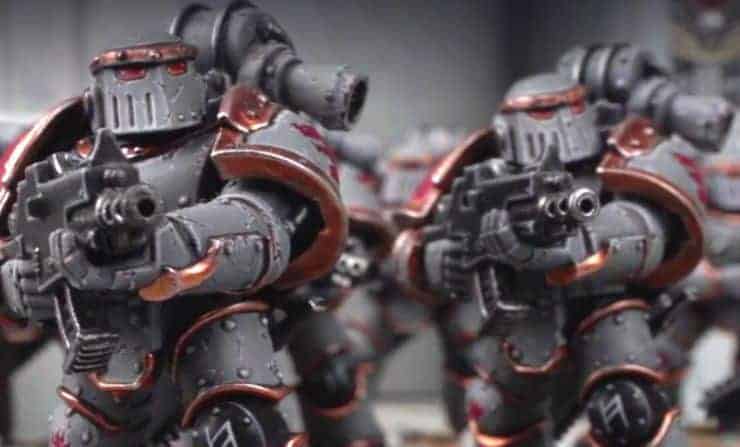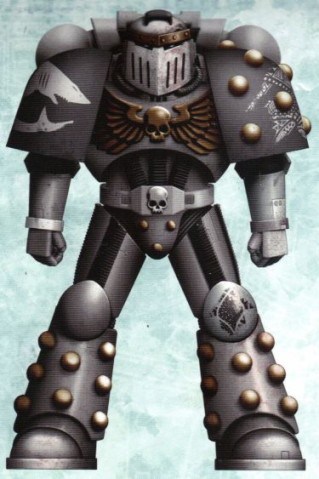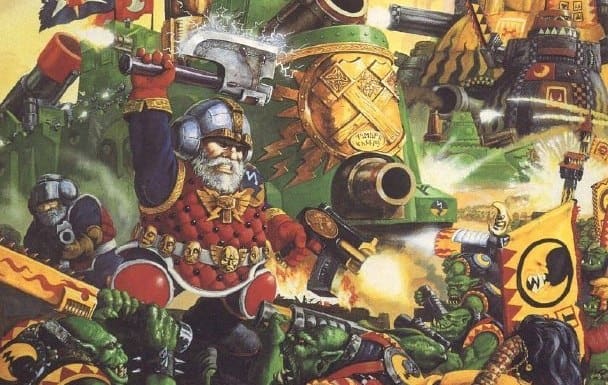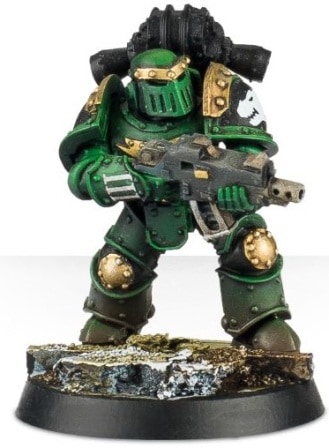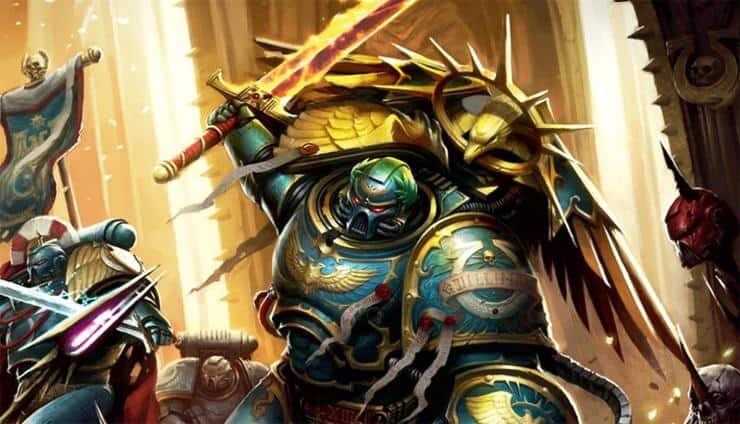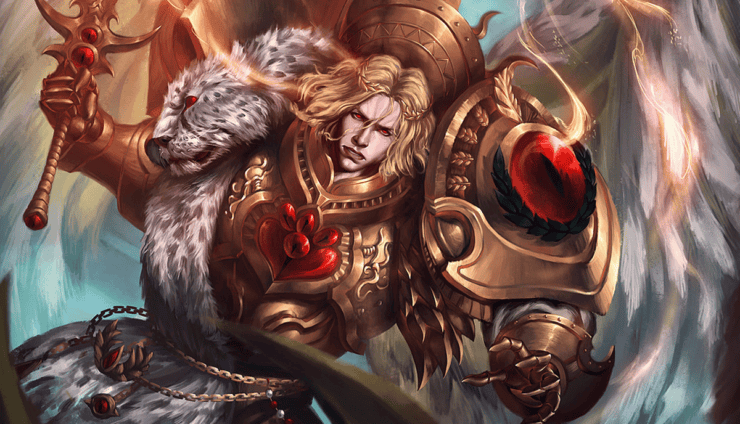As the Great Crusade raged close to the galactic core, the Mark 3 Power Armor was brought about during the fight against the Squats.
Via our friends at Lexicanum
Power armor is fully sealed, isolating the wearer from the outside environment and protecting him from gas weapons and harsh atmospheres. It also commonly includes numerous auxiliary systems such as communicators and auto-senses. The backpack contains the main power plant, environmental system and additional stabilizers. Whilst power armor is most commonly associated with the Adeptus Astartes, the Sisters of Battle and many Inquisitors also use powered armor of one sort or another. Typically however these armors may not contain the same strength-enhancing properties or life-support functions of Space Marine power armor, nor do they provide the same amount of protection. All armor may further be augmented by various artifacts, relics and enhancements such as pauldrons and greaves. Power armor has been in use since before the Age of the Imperium, from the techno-barbarians of Earth to the original Space Marines created by the Emperor. Over the history of the Imperium, power armor has developed into many different forms. Need, circumstances and recovery of new materials and technology has shaped the armor’s evolution.
This model dates from the wars of the Great Crusade, waged close to the galactic core. Many of these worlds were the Squat Homeworlds, which were not pleased to find themselves the object of galactic conquest. The Squats’ independent and stubborn nature, along with the conditions of the fighting, spurred the creation of this new armor type. This armor was ideal when cover was minimal and combat was a matter of frontal assault. The most visually brutal and imposing of all the widely produced armor marks, the Iron Armour was a heavy, modified Mark II design (itself the first mass-produced Power Armour of the Crusade era). The Iron Armour’s structure has augmented frontal defense and incorporates additional ablative plates, and is intended foremost for use in boarding actions, tunnel assaults and void warfare, although it is considerably heavier and more power hungry than its contemporaries. The new helmet design is a heavily armored model with sloping plates designed to deflect shots to the left and right, and inspired the Mark IV and VI helmet designs.
Mark III was never intended to replace the previous Mark but to act as an optional suit specialized for situations where heavier frontal protection would be advantageous, such as in the close confines of spacecraft and mining complexes. Because of this, no Legion was ever fully equipped with the Mark III. While successful in the conditions it was designed for, the armor is too clumsy and uncomfortable for conventional fighting. It is sometimes worn by ceremonial guards due to its visual brutality, and can also still be found used in close-quarters situations by various Space Marine Chapters. It is commonly called the Iron Suit or Armorum Ferrum in recognition of its great strength.
